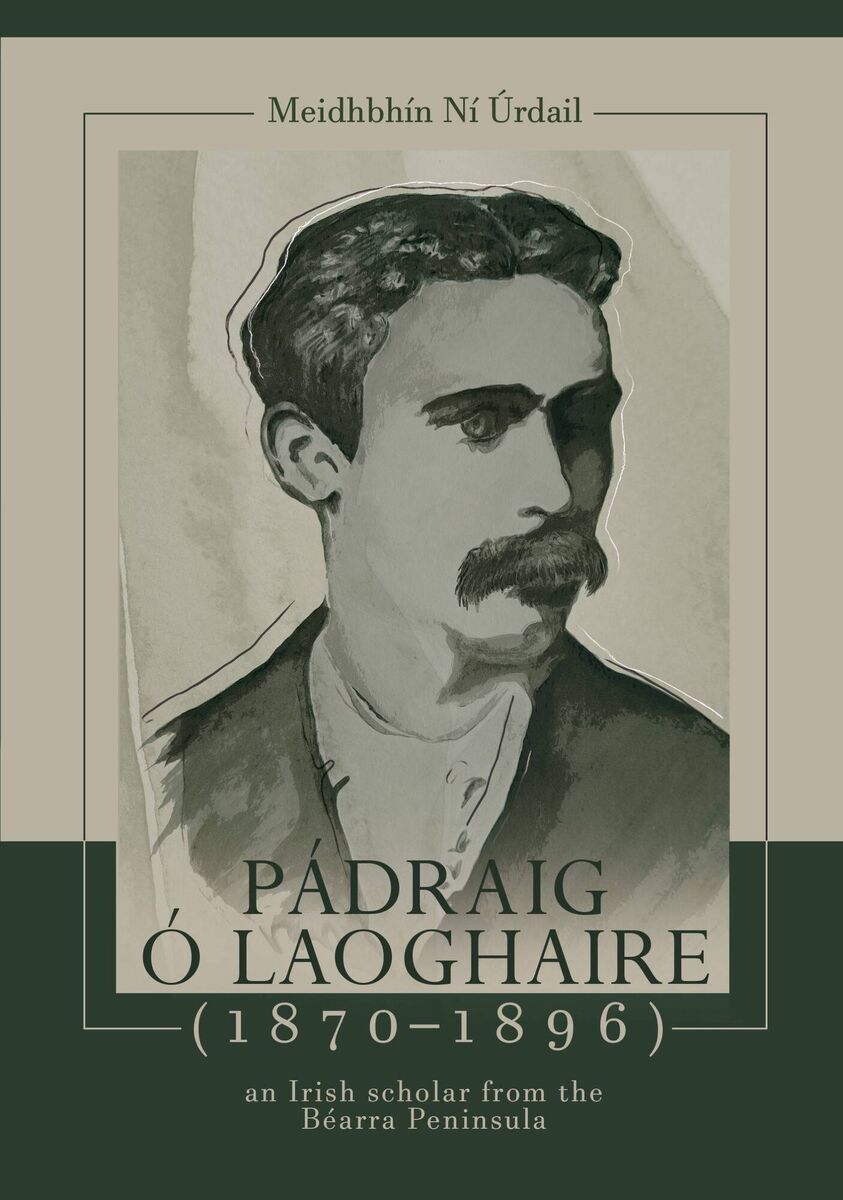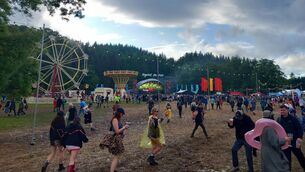Book review: Biography of Beara scholar Pádraig Ó Laoghaire of huge value

Meidhbhín Ní Úrdail at St Peter’s, Castletownbere, Co Cork, at the launch of her remarkable book ‘Pádraig Ó Laoghaire (1870-1896), an Irish scholar from the Béarra Peninsula’; Pâdraig Ó Laoghaire was a native of Eyeries The book was published by Beara Historical Society and is dedicated to the people of Beara. Picture: Anne Marie Cronin Photography
The short but significant scholarly life of Pádraig Ó Laoghaire from Eyeries is captured in a new book published by the Beara Historical Society.
The Irish scholar from Inches in the parish of Kilcatherine lived only to the age of 26. But the period of his life between 1870-1896 was pivotal for the Irish language, as it laid the foundation for what was to follow.
And this new book by academic Meidhbhín Ní Úrdail touches on the broader questions as well as the local detail.
Had he lived longer, he might have been as famous and contributed as much as his neighbour and namesake from Muskerry — An tAthair Peadar from Clondrohid (1839-1920) who lived a long and influential life in the Irish revival movement.
Indeed, the clash between the two men in 1895 brought to light in this book suggests a difference of approach that might have influenced the direction of how Irish was later taught and how more inclusive it might have been had Beara O’Leary lived. But while the question is well canvassed by Meidhbhín Ní Úrdail, we can never know for certain.
Ó Laoghaire is best known as the author of the pioneering book Sqeuluidheacht Chúige Mumhan, the first ever published collection of Munster folktales. He was admired by the likes of Douglas Hyde, Eoin MacNéill, and Dr Osborn Bergin, to whom he taught Irish.
Those of us who studied Irish in University College Cork (UCC) — and probably elsewhere — were schooled on the dramatic decline of Irish after the Famine and how it survived only among the “noble Irish” of the seafront and islands.
There is at least a suspicion that among the cos-mhuintir in Cork and parts of Kerry where there was a love of learning the language lived on far more strongly and later than has been acknowledged, or perhaps than it was political to concede.
Long after I left UCC, I found out from the 1911 census how my great grandparents from Killarney not alone spoke Irish but wrote it.
This is contrary to the notion that English had entirely triumphed and the Irish disappeared only to live in the most forsaken margins 70 years previously.

Ní Úrdail captures the strength of the Irish in Beara as late as in the 1890s with Ó Laoghaire so easily able not just to polish his spoken Irish, but also to learn how to write it with facility.
His main contribution and the role he played in the Gaelic League movement and the songs, tales, and other material he assiduously gathered and composed is well captured here.
However, a key episode is the clash with his famous neighbour An tAthair Peadar. A weighty character in the league and in the revival movement, educated in Maynooth, An tAthair Peadar rebuked the young man from the Beara over what could be called offending public taste in his references to dirty local songs as Gaeilge.
The incident from which the priest’s great displeasure arises took place in Cork in September 1895 in a lecture about love songs.
What amounts to a strong warning about the danger for the league of publishing “immodest material” issued.
It was a great pity to be discussing “immodest things” … “love songs — girls and boys and that sort of thing” at a public lecture, an tAthair Peadar wrote.
Nothing that was not published in English should be published in Irish, he felt. There was a swipe too at the younger man’s grasp of Irish — as having too much of “a whiff” of English.
Ní Úrdail writes of the “very contrasting approaches” the incident reveals. It is indeed a microcosm of the way Irish teaching was being steered even before the foundation of the State.
The language was held up in a corset of moral propriety and hardly anything of life was allowed in — a bit like Irish dancing until Riverdance.
Underneath was a deliberate position that the two languages, English and Irish, could not live together and that the Irish language was purer somehow than the loosely lived and more global English.
The ironic obsession amongst the Irish nationalist and academic class with Victorian correctness coupled with an unhealthy concentration on grammar and “exactness” prevailed and was a complete turnoff for generations.
If Irish has survived, it is in spite of the teaching which actually deprived people of an old and ancient emotional vocabulary, something that has never been properly addressed in dealing with mental illness in this country.
Moreover, the decision to anchor the language in the pure and poor coastal areas, as distinct from areas like Cork or Limerick with their rich literary remnants of the bardic schools and manuscript making, was strange.
Once again one suspects the reasons were nationalistic romantic ideals of the pure noble savage captured in the fisherman of Yeats and the cult of the Blasket men — almost entirely divorced from reality.
But back to this work by Ní Úrdail, who is Head of Modern Irish at University College Dublin: It may seem perhaps a bit over-scholarly for the ordinary reader, but it is of huge value and represents a tale well told and not before time.
It is a huge work on a short life and it includes the poetry as well as the prose and, most importantly, the very local phrases collected by Ó Laoghaire on the Beara peninsula which adds to and perhaps even helps restore the emotional lexicon of Munster Irish.
- Pádraig Ó Laoghaire (1870-1896): An Irish Scholar From The Béarra Peninsula by Meidhbhín Ní Úrdail
- Cumann Staire Bhéarra (Beara Historical Society), €30



